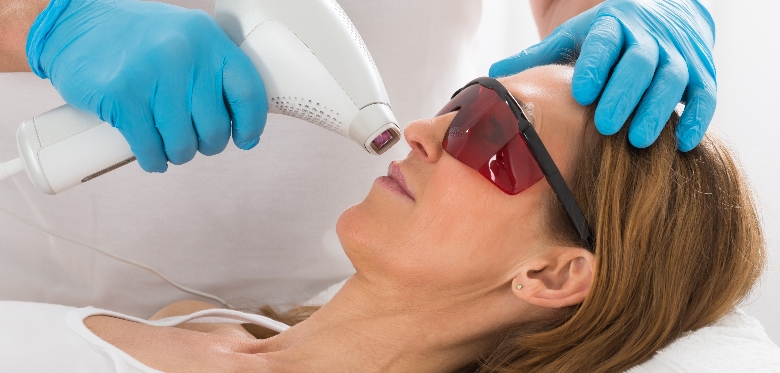Laser therapies are medical treatments that use focused light, in a beam, which allows greater precision. But not only are laser therapies used in conventional medical situations, but also in cosmetic treatment.
Have you ever stopped to ask what LASER stands for? It's Light Amplification by Stimulated Emission of Radiation. And when you put it that way, it does sound kind of scary, doesn’t it? And yet many of us are opting to have laser treatment for a variety of cosmetic, not medical,reasons.
Most commonly lasers are used as a means of hair removal. During this procedure, laser is used on the surface of the skin to damage the hair follicle, which prevents regrowth of the hair.
Laser is also used as a means of anti-ageing, as lasers are used to stimulate the production of collagen, making the skin plumper. This is known as photorejunvenation. Lasers can also be used to remove a layer of skin from the face, the effect of which is that the skin should grow back tighter and with less visible blemishes. Again, a means of targeting the ageing process.
It can also used for correcting skin issues, particularly acne scars, thread veins, age spots and also the removal of tattoos. The laser is used to reduce the appearance of imperfections.
Side effects
It is quite normal for there to be redness, similar to sunburn, following laser treatment. You may also experience some swelling, tightness, itching and when used for anti-ageing, some skin peeling.
However, when things go wrong, the redness can be severe and permanent scarring can occur. There can be a permanent change in skin colour and also there is a risk of bacterial infection.
If you are considering laser treatment, here are some basics checks:
- Check the clinic or practitioner you are looking to use is registered with the Care Quality Commission (CQC), as these regulate such practices
- Ensure the practitioner has indemnity insurance.
- Ensure the practitioner does a patch test before commencing the full procedure
- Consult your GP as there may be a medical reason why you are not suitable for laser treatment
- Remember, sun, bed, bottle – no tan allowed on skin that is to be lasered
- The skin also needs to be completely clear and free from product, including makeup and deodorant
- With laser hair removal, it is important to bear in mind that it works best on people with pale skin and dark hair. If you do not match these characteristics, this may not be the most effective treatment for you.
And finally, these treatments aren’t permanent, they are costly and may need repeating many times so be realistic in your expectations. Take time to find a reputable practitioner who is properly qualified and practises in a clean, safe and appropriate environment and ask the practitioner what you should do if something were to go wrong.
If you have had laser treatment and have been left with scars or skin issues, then please contact our specialist team on 01616 966 229, who will be happy to discuss your issues with you.



Comments